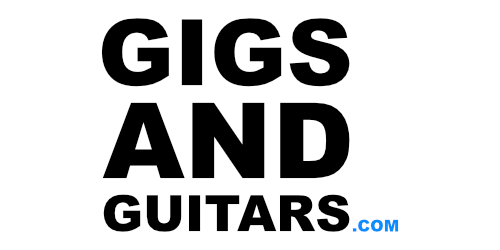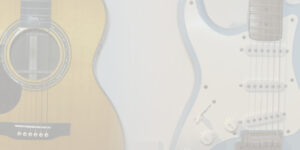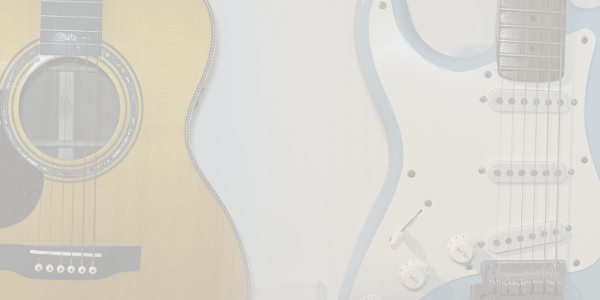
Two Note Captor 8 Hidden Feature! – Two Note Captor money saving switch!

Introduction
A few months (maybe even a year or so ago now), I did a review with Two Notes on their Torpedo Captor 8 device (Read review here). This is Two Notes’ “budget” load box and attenuator. As we discussed in its review, it isn’t as feature-packed as the Captor X; however, it still gets the job done, and I liked it. Well, I still have it! I still use it pretty much weekly for videos! However, there is a Two Note Captor 8 Hidden Feature I never really used; I didn’t even demo it in the last review.
So, I thought I would put together a quick article going over the Two Note Captor 8 Hidden Feature, as I think it is worth mentioning and bringing up since I don’t think many people either know about it or even bother to use it! So what is this feature? Well, it is the built-in cab sim! I know, I bet you didn’t even know the Captor 8 had a cab sim built-in! It gets even better; I bet you didn’t know it was decent!
Two Note Captor 8 Hidden Feature!
Two Note Captor 8 Hidden Feature!
So, a cab sim built-in! I bet you are thinking, ‘You have to buy the Captor X to get cab sim.’ Well, to be able to load in your own IRs, yes you do. However, the Two Notes Captor 8 has a fully analog cab sim! We did mention it briefly in our review, and many of you know about it (may even use it). But I would say most don’t use it or have ever used it! Some may not even be aware of it! It gets even better. Are you a bassist? Well, good news! The Captor also has a Bass Cab built-in! Meaning you can use it to run your bass amp through for the same desired effect!
So there are two cab sims available, one guitar and one bass. The guitar cab is based on the ‘Brit VintC DynIR cabinet’ with Dyn57 Microphone, and the Bass cab is based on the ‘Fridge DynIR cabinet’ with Cnd87 Microphone. The guitar cab is based on a Slash Signature Marshall 4X12 mics with a Shure SM57. Whereas the Bass Cab is based on an Ampeg STV 8X10 mics with a Neumann U87.
How does the Captor 8 Hidden Feature work?
So how do you use it? Well, it’s super easy! You will need to plug your amp in one end (make sure to use a speaker cable) and then plug an XLR cable into the other (and then into your desk), you will need to power the Captor. Either by phantom power or any 9v-24v power supply. Then just above the XLR output plug, there is a small switch so you can switch between Guitar, Off, and Bass.
If you are a purist, you will be happy! The cab sim is all analog! It’s not really a cab sim; it’s more of an extreme EQ! This means that your signal is changed, isn’t turned into a digital signal! In fact, the whole Captor 8 device is analog!
Worried using this setup will lead to extra cables? Well, technically there aren’t any extra cables! You will need a speaker cable to go to the input of the Captor; however, from there, it’s just an XLR to the desk! Same as a mic would have! You won’t even have a wall wart or power cable as the whole device is powered by phantom power from your desk! Meaning you can have a proper tidy and clean setup!
Now, it isn’t all rainbows and sunshine; there are some drawbacks! The biggest one is that you can’t change the cab sim! It is all analog so no option to swap it out; it is set and there isn’t anything you can do! Along the same wave of this, there aren’t any options to change the sound in any way either! No mic placement, not mic or speaker change! Like we said above, you have one option! That’s it. However, is this an issue? Does it matter? Is it any good?
Is it any good?
Now, when you compare it to the full-blown IRs that Two Notes provide, maybe they are a little better, plus they have more customizable options and presets; however, for the price and ease of use! The one that comes in the Two Notes Captor 8 is just fine.
I guess the question that you all have is ‘Is it actually usable?’ To put it bluntly, yes, it is! I have been using it for my band, and it sounds just perfect! In fact, no other member of the band has even noticed a change! Now, if you don’t like the sound of the actual cab sim (you don’t want a Marshall 4X12), then it might not be usable to you! However, I think the sound it puts out is perfectly fine for performances and what I have been using it for.
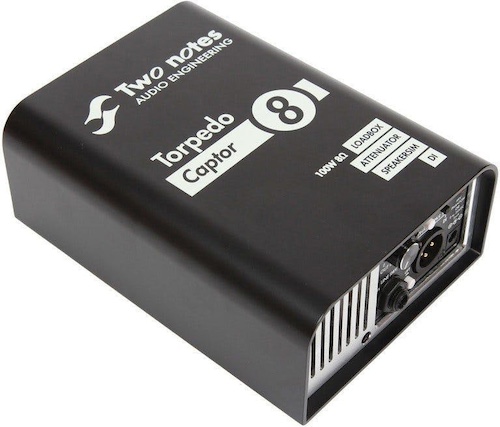
So, what have I been using it for? And why have I only just started using it? Well, my band has recently gone to a full IEM setup, and being a guitarist, I love my amp and its sound! Now, I could look at mic’ing the amp up, but this comes with its own hassle and issues. Mainly, the sound is different every gig and I have to make sure the mic placement is the same. Plus, we are also trying to go for a silent (or fairly quiet stage). So by using the Two Notes Captor, I can use my own amp and all its sounds, have no sound from the amp, and have the same sounds every gig! Plus, it’s super quick and easy to set up and use! I can place my amp anywhere! Even off stage! I think it’s a great middle ground between a full digital floor unit and a full amp and mic setup!
Captor 8 or Captor X
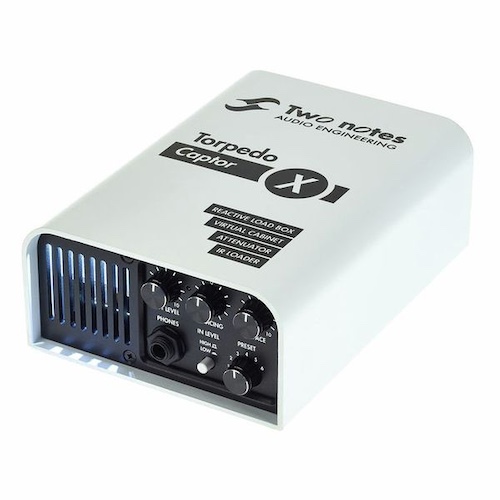
Which one should you get? I think that if you are like me and will use your Captor 80% in the studio with the Two Note Software and 20% at gigs and are happy with the built-in cab sim, then the Captor 8 is perfect! However, if you plan to use it more live, need more IR options and several presets, then the Captor X would be more suited! I think it all depends on your needs and what you plan to use it for!
Another point to make is that the Captor X also has some extra features, including voicing options and others. However, the main one for a lot of people will be stereo outputs! You have separate XLR outputs for left and right, using the software to set up different cabs for different outputs. Personally, for me, I would always run in mono!
There is the big thing of the price you have to think about. The Captor X is around £430, and the Captor 8 ohms is £185. That is a massive difference! I am aware you get ‘more’ with the Captor X, but like we said above, if you are mainly using it in the studio and only use it live a few times, is the X worth the extra price? Well, put it this way, I haven’t ever felt I needed to spend more!
Conclusion
In conclusion, the Two Notes Captor series presents a versatile solution for guitarists seeking flexibility in their tone shaping. The Captor 8, with its built-in cab sim and analog design, offers a seamless transition between studio and live settings. Its affordability and ease of use make it an attractive option for those prioritizing practicality without compromising quality.
Conversely, the Captor X caters to musicians craving expanded options with its extensive IR library and additional features like stereo outputs. While the Captor X commands a higher price point, its advanced functionalities may justify the investment for performing artists requiring intricate sound manipulation. Ultimately, the choice between the Captor 8 and Captor X hinges on individual preferences, usage scenarios, and budget considerations.
Whichever model aligns with your specific needs, both exemplify Two Notes’ commitment to delivering reliable, performance-driven solutions for the modern guitarist. Whatever choice you make, don’t forget about the Two Note Captor 8 Hidden Feature
If you want to support the site then please give us a follow on Instagram and subscribe to our YouTube.
Check out our other Articles here
